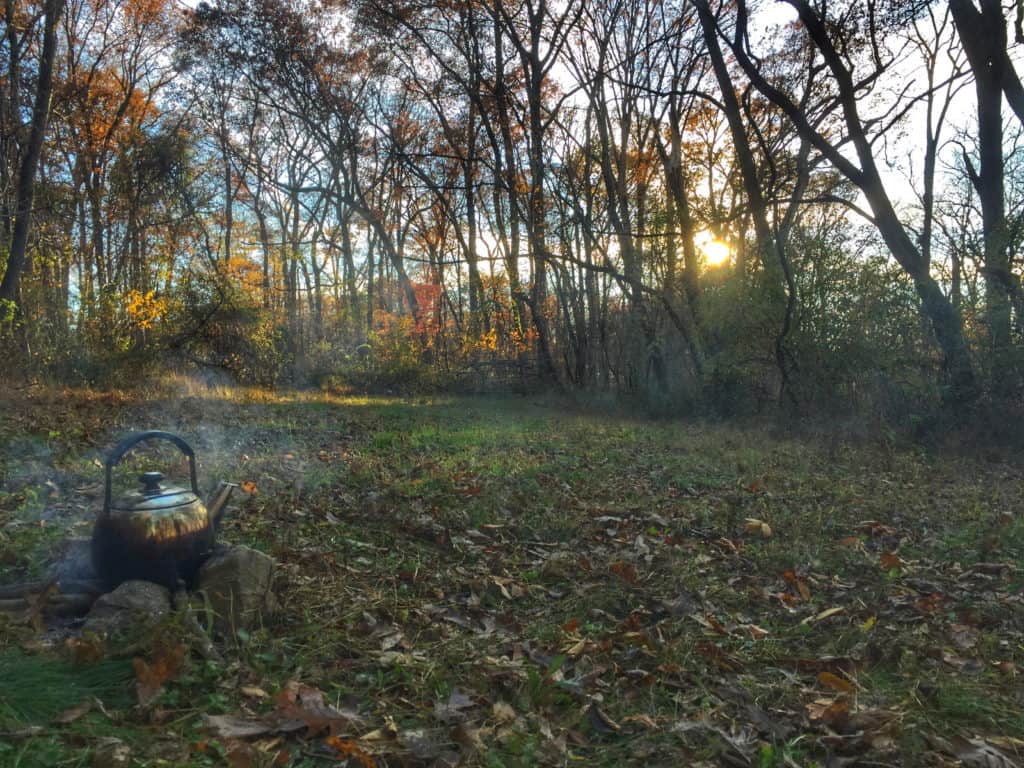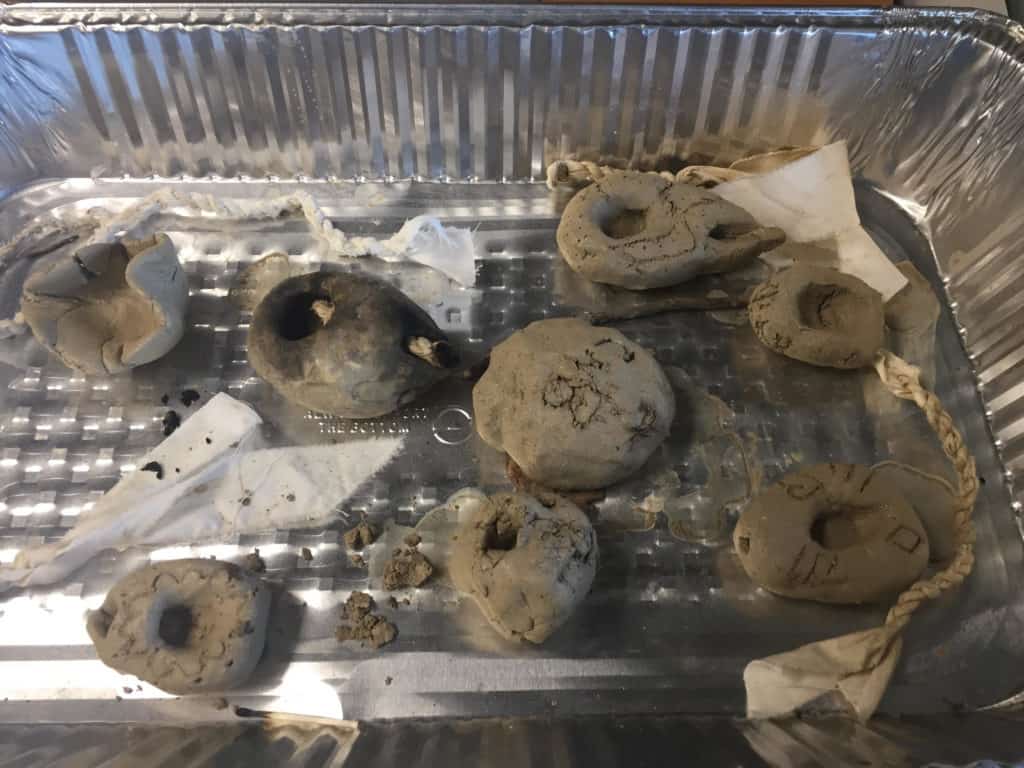by Ilana Unger, Pearlstone Center
Parshat Vayeishev

Forest tea brewing as kids build fires at Pearlstone Center. The tea is made from frehly foraged spice bush and pine needles | photo: Ilana Unger
In parshat Vayeishev (Genesis 37:1-40:23), lands on the third Shabbat of Kislev, we connect deeply to this Jewish month of actualization and revelation. For example: Vayeishev is the Hebrew word for “and he lived” (actualization) and nine out of the ten dreams that we read in the Torah are in this month (revelation).
To recap the many things that happen in this parsha:
- Joseph is exiled and sold into slavery in Egypt by his brothers.
- Joseph is then falsely accused of sexually assaulting Potiphar’s wife and is sent to the Pharaoh’s prison where he becomes an overseer in the prison.
- He is joined in prison by the Pharaoh’s butler and baker. They say they have had vivid dreams and are looking for an interpreter.
- Joseph interprets their dreams and accurately does so, predicting that the baker be hanged while the butler will be restored to his job duties.
As Joseph is literally in a dark place in the prison, he is selfless and wants to hear and listen to how he can help the butler and baker. Kislev, which derives from the Hebrew word kesel (כֶּסֶל), means either “security,” or “trust.” Joseph seems to be very trusting of his brothers and look where it lands him: exiled in Egypt. He lives and helps those around him, when he could be complaining about the situation he is in.
Joseph outlives many of the obstacles that he is confronted with and I am reminded of the Yiddish saying,”Mir veln zey iberlebn,” or “we will outlive them.” We too are faced with many obstacles as a country and Jewish community. I ask myself and you as a reader, where are we selfless in dark times? What does it mean to be selfless?
In a time of great darkness in our world, our communities and quite literally outside our windows, how do we manifest light in this darkness?
I’ve been thinking about this question a lot recently. As our month of Kislev is ending, the darkest time of the darkest month of the year, our light must shine even that much brighter. As a JOFEE educator, what does it mean for me to be a light in the darkness?

Oil lamps made from mud gathered at nearby Sycamore creek during Pearlstone’s Tiyul Adventure Year program | photo: Ilana Unger
As the season is slowing down here at Pearlstone we have had time as a staff to do some skill building in preparation of year round programming we run. Tiyul Adventure Year is a program we run seasonally on Sundays for 2nd-6th graders as a way to awaken their senses outdoors through storytelling, food, music and ancient sacred skills.
As a staff we wanted to focus on creating light in this dark time so we decided to make oil lamps with mud from our Sycamore Creek on the Pearlstone campus. We used our hands to create a vessel of light to shine during these dark times. As an outdoor educator working the land, creating something to spread light meant a lot to me. Our land is slowing down, our work is slowing down and we as fast paced ever moving people are slowing down.
As Joseph was in a dark place, we too are in a dark place.
Vayeishev: And he lived.
Mir veln zey iberlebn: we will outlive them.
Joseph lived as we too shall live. As Hanukkah is approaching, let us be a light in our communities, in our world and for ourselves.
Ilana Unger grew up both in Vermont and Colorado and was a fellow at Urban Adamah and program associate at Hazon Detroit before coming to Pearlstone Center as a JOFEE Fellow. Outside of work she is an outdoor enthusiast and enjoys meditating, running, hiking, biking, skiing, cooking delicious food, and spending time with the beautiful people in her life. Read her full bio here.
—
Editor’s Note: Welcome to D’varim HaMakom: The JOFEE Fellows Blog! Most weeks throughout the year, you’ll be hearing from the JOFEE Fellows: reflections on their experiences, successful programs they’ve planned and implemented, gleanings from the field, and connections to the weekly Torah portion and what they’ve learned from their experiences with place in their host communities for the year. Views expressed are the author’s and do not necessarily represent Hazon. Be sure to check back weekly!




Comments are closed.